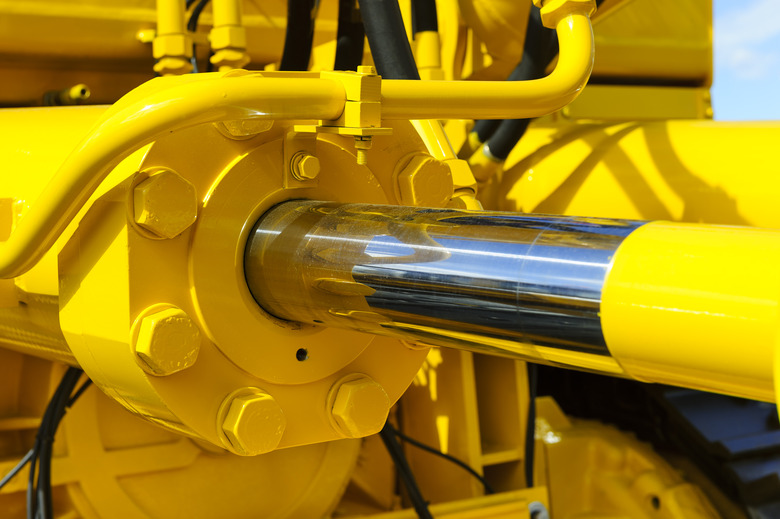How To Calculate Hydraulic Cylinder Tonnage
A hydraulic cylinder can exert enormous forces because of the way fluids act under pressure. With a little simple geometry you can calculate a cylinder's force in pounds or tons. The pound force is the product of the fluid pressure in psi multiplied by the cross-sectional area of the piston. To get the hydraulic cylinder tonnage, divide the pound force by 2,000.
Step 1
Measure the diameter of the piston of the hydraulic cylinder with the ruler. If the end of the cylinder has a saddle or other fitting, measure the actual piston diameter, and not the fitting, because the fitting might be larger than the piston.
Step 2
Calculate the cross-sectional area of the piston by squaring the diameter, multiplying the result by pi (3.14), then divide this result by 4. For example, for a piston with a 5-inch diameter, square 5, multiply the result by 3.14, then divide by 4 to get 19.625 square inches.
Step 3
Calculate the cylinder tonnage by multiplying the cross sectional area as calculated above by the pressure capacity of the hydraulic pump, as listed in the pump specifications. For example, using the example cylinder above and a 1,000 psi pump, multiplying 19.625 by 1,000 gives you 19,625 pounds of force. To convert from pounds to tons, divide this result by 2,000 to get 9.8 tons.
Things Needed
- Hydraulic cylinder
- Ruler
- Hydraulic pump specifications
- Calculator
Cite This Article
MLA
Kristoff, Susan. "How To Calculate Hydraulic Cylinder Tonnage" sciencing.com, https://www.sciencing.com/calculate-hydraulic-cylinder-tonnage-5912415/. 13 March 2018.
APA
Kristoff, Susan. (2018, March 13). How To Calculate Hydraulic Cylinder Tonnage. sciencing.com. Retrieved from https://www.sciencing.com/calculate-hydraulic-cylinder-tonnage-5912415/
Chicago
Kristoff, Susan. How To Calculate Hydraulic Cylinder Tonnage last modified March 24, 2022. https://www.sciencing.com/calculate-hydraulic-cylinder-tonnage-5912415/
